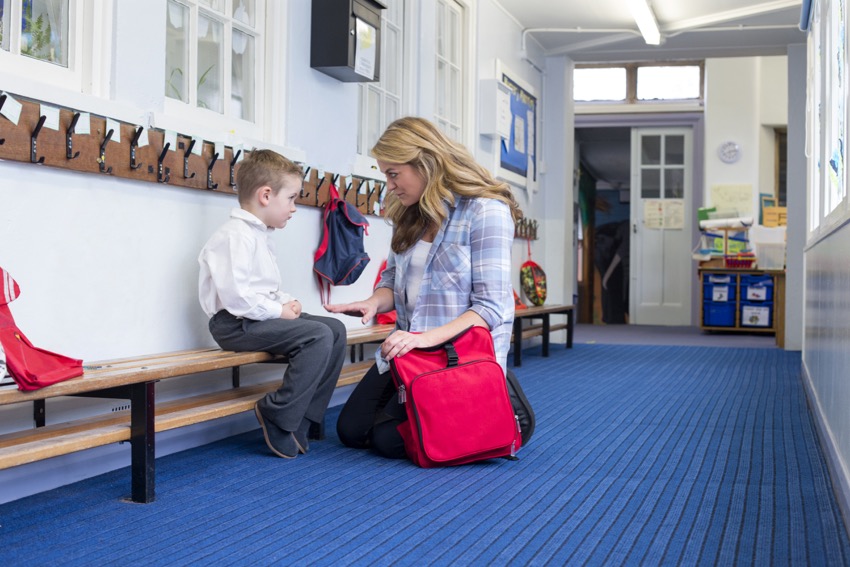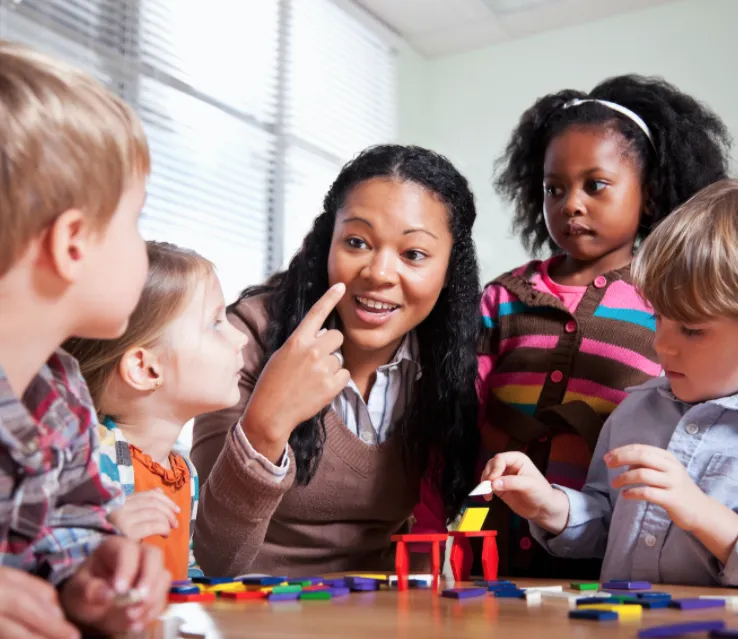5 Ways to Support Social–Emotional Development in Early Childhood

Supporting children’s social–emotional development at an early age builds a solid foundation for their future, preparing children to successfully manage their emotions and behaviors, establish caring relationships with others, follow limits and expectations, and interact in groups. Studies show an increase in student achievement data for children who learn social–emotional skills in their early childhood programs compared to children who do not receive this support.
1. Use power words.
Some children are able to express their wants and needs effectively during conflict; others need your help. To learn this skill, children must feel empowered to stand up for their rights, particularly when they feel threatened. With younger children, you can begin by teaching short, powerful words and phrases that they can use, such as “Stop!” or “I don’t like that.” Make sure you use a firm tone of voice to model it. Coupling the phrase with the physical motion of putting a hand up can help children remember the power words and gives them something respectfully physical to do with their bodies in a conflict. Sometimes children resort to physical aggression as a protective, defensive strategy. Using a gesture feels protective without being hurtful to someone else.
2. Help children understand the consequences of behavior.
All behavior has consequences. Using this concept to guide children’s behavior allows them to make connections between their actions and what happens in response. It’s important to relate the consequence to a child’s actions. For example, if a child dumps out a basket of crayons, it produces a related consequence: the child has to pick up the crayons and put them away. To limit power struggles, make sure to use a neutral tone of voice and keep the consequence directly related to the action.
3. Show while telling.
Showing while telling involves talking with children about what they should do as you use gestures and other visual clues to show them. Make sure to stay focused on the positive—the “do” rather than the “don’t.” For example, you could touch the jackets as you say, “When we have finished putting our jackets on, then we can go outside.” You can also use this strategy to draw children’s attention to other people’s feelings. You could point to and look at Genessa’s face as you explain, “Look at Genessa’s face. Her frown tells you that she doesn’t like it when you push her.” Showing while telling is particularly helpful to children who need extra support to understand the meaning of your words.
4. Establish “little rules.”
All groups need a few basic rules to help create a safe and caring community. Every classroom should have three or four main rules. I call them the “big rules”: “be safe,” “be kind,” and “take care of property.” Young children need help to learn what those big concepts actually mean, and they most certainly will need reminders along the way to follow those classroom rules. So, when enforcing the rules, use the “big rule, little rule” strategy. Pair your big rule—”be kind,” for example—with a specific little rule you want them to know: “Be kind. Use a quiet voice in the Library area,” “Be safe. Walk inside,” “Take care of our classroom. Put the puzzle back in the box when you are finished,” or “Take care of your tablet or computer. Put it in a very safe place.” Make sure to keep the little rules framed in positive terms so children stay focused on what you want them to do instead of what you don’t want them to do.
5. Listen actively and empathetically.
It may sound simple, but the most powerful child guidance tool we have as teachers, leaders, or parents is active, empathetic listening. A young child experiencing strong emotions needs our attention and our empathy. To be an active, empathetic listener with young children, first, notice when children are experiencing strong emotions, such as frustration, anger, excitement, sadness, and elation. Move close to the child. Move your body to his or her level. Make eye contact and offer a gentle touch, as appropriate, to let the child know that you’re listening. If you are teaching remotely, ask the child to meet with you one-on-one to address the behavior. Repeat back what you hear the child telling you through words and actions in language that they can really understand.
Now here’s the really important part—reflect the same tone that they are expressing. This lets a child with limited language know that you understand what they’re feeling. Your tone and facial expressions are so important in this step, particularly for children whose language skills are still developing. It’s your tone of voice and your facial expressions that communicate your understanding of their feelings. It may feel strange or a little uncomfortable the first time you do it, but as soon as it works for you, you won’t care what you look or sound like. The child is hearing you and knows that you genuinely understand what they’re feeling. When the child calms a bit and seems ready, you can name and explain the feelings. Use words to describe feelings accurately. Once you get the hang of it, this strategy is so easy to use and will be one of the most powerful tools in your tool box.

Support for Every Child, Teacher, and Family
Build the resiliency that young children need for success in school and life with the Social-Emotional Impact Solution.